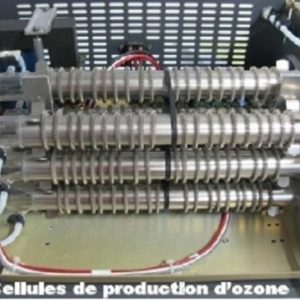Subtotal: $100.00
E – 1510 Locking Arrangements & Code Compliance For Engineers
$100.00
Courses Included
The four part Security Practices & Engineering Concepts are inter-related courses on the history and development of state-of-the-art security systems.
- Motion Detection Technology.
- Locking Arrangements & Code Compliance For Engineers.
- Customizing Security Design.
- Biometric Features & Principles for Engineers.
Understanding the advances in lock hardware arrangements is the most important and fundamental subject in the field of security technology. Selection of a door lock is no longer simple and has rarely provided the level of security required in this era of mass murder and the threat of terrorism. This course describes the evolution of mechanical locks, starting with the introduction of the pin-tumbler lock that replaced the skeleton key in 1880. That change created the locksmith industry and the beginning of key control and to identify the authorized user. This course provides a broad review of the 150 year old history of door hardware arrangements and describes the many technical changes in door control and personnel identity systems have evolved after the introduction of card readers and the subsequent revolutionary advances made in door control by the introduction of the digital communication systems. Keys, cards and push buttons are beginning to be replaced with the smartphone and the associated mobile Cloud network.
The course can be considered as a fundamental introductory course to the PDH course E-1511 “Biometric Features and Principles for Engineers”.
The four-part Security Practices & Engineering Concepts are inter-related courses on the history and development of state-of-the-art security systems.
Description
The four part Security Practices & Engineering Concepts are inter-related courses on the history and development of state-of-the-art security systems.
- Motion Detection Technology.
- Locking Arrangements & Code Compliance For Engineers.
- Customizing Security Design.
- Biometric Features & Principles for Engineers.
Understanding the advances in lock hardware arrangements is the most important and fundamental subject in the field of security technology. Selection of a door lock is no longer simple and has rarely provided the level of security required in this era of mass murder and the threat of terrorism. This course describes the evolution of mechanical locks, starting with the introduction of the pin-tumbler lock that replaced the skeleton key in 1880. That change created the locksmith industry and the beginning of key control and to identify the authorized user. This course provides a broad review of the 150 year old history of door hardware arrangements and describes the many technical changes in door control and personnel identity systems have evolved after the introduction of card readers and the subsequent revolutionary advances made in door control by the introduction of the digital communication systems. Keys, cards and push buttons are beginning to be replaced with the smartphone and the associated mobile Cloud network.
The course can be considered as a fundamental introductory course to the PDH course E-1511 “Biometric Features and Principles for Engineers”.
The four-part Security Practices & Engineering Concepts are inter-related courses on the history and development of state-of-the-art security systems. This course covers special locking arrangements including sophisticated wireless smartphone systems that have made locksmiths practically obsolete. Thieves compromise locking systems, not by picking the lock, but by hacking the new door control systems via the Internet. It is essential that professional engineer be exposed to the significant and lasting changes confronting those involved or interested in the field of facility design. They should understand the different locking concepts now available and be made aware of the fire codes that affect some of the more complex locking hardware that can lock fire exits from both directions and still be in compliance with national fire codes.
The course is designed to provide engineers with the limitations of various locking arrangements and to describe that the selection of the “lock” can no longer be a simple or cookie-cutter decision:
- Describes the art of locking picking to illustrate how easy it is – and how easy it is obtain the necessary picking tools.
- Evaluates objectively the consensus method used to create NFPA fire codes
- Legally locking fire exits with fail-safe locks
- History of once conventional but now obsolete locking arrangements
- Analysis of traditional mechanical locks
- Review of special locks from the combination vault to the push button locks.
- Description of various types of special locks that operate with smartphones
- Reviews the history of fail-safe electro-magnetic locks
- Understanding the history and major types of smoke sensor and their history


 E - 1105 Flow Measurement in Pipes and Ducts
E - 1105 Flow Measurement in Pipes and Ducts 



